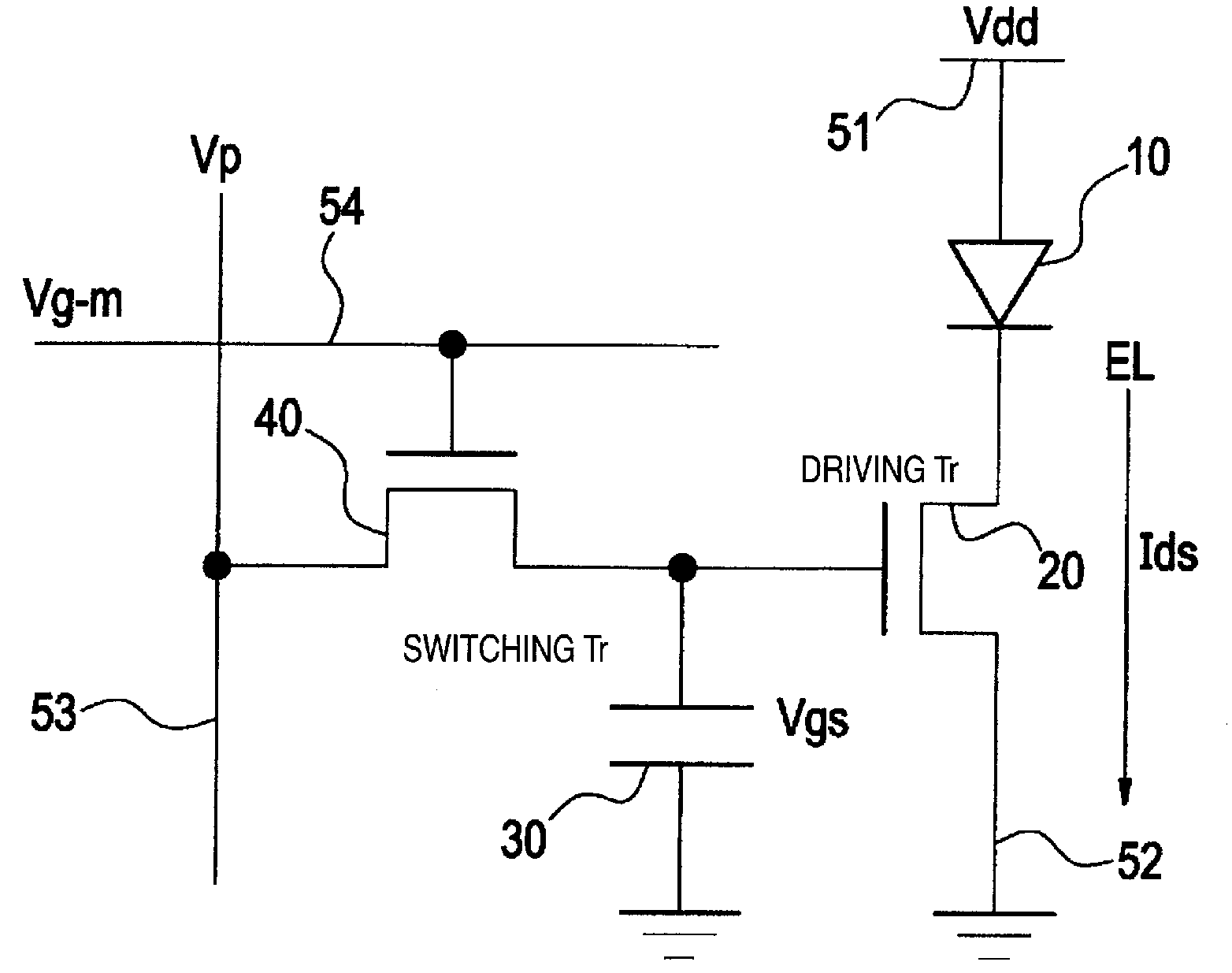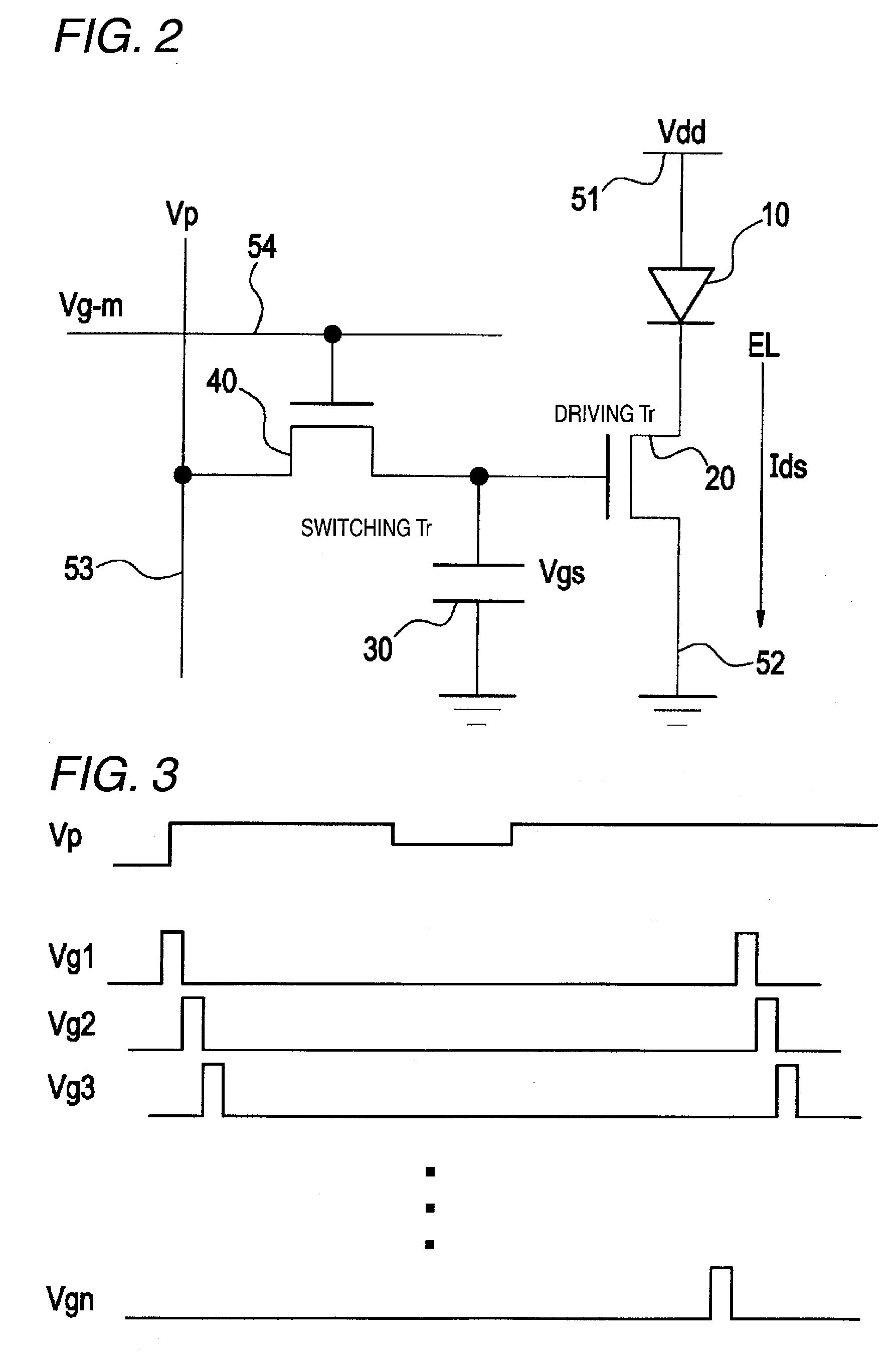Organic electroluminescent display device and method of producing the same
- Summary
- Abstract
- Description
- Claims
- Application Information
AI Technical Summary
Benefits of technology
Problems solved by technology
Method used
Image
Examples
specific example 1 of
PRODUCTION PROCESS
[0086]As shown in FIG. 6, an insulating film is formed on a substrate 60, and thereafter gate electrodes 61, 62 constituting the transistors are formed thereon by film formation and patterning of an electrode material. Then, gate insulating films 63, 64 are formed thereon by film formation and patterning of an insulating material. Next, two active layers 65, 66 are formed thereon. The formation of the active layers 65, 66 is processed in the following manner.
[0087]While using a polycrystalline sintered body having a composition of InGaZnO4 as a target, the process is performed by the RF magnetron sputtering vacuum deposition method. In this example, the following conditions are employed:[0088]Flow rate of argon (Ar): 12 sccm,[0089]Flow rate of oxygen (O2): 1.4 sccm,[0090]RF power: 200 W, and[0091]Pressure: 0.4 Pa.
[0092]As a result of the process, the active layer 65 has the following characteristics (the same is true in the active layer 66):[0093]Electrical conduct...
specific example 2 of
PRODUCTION PROCESS
[0102]As shown in FIG. 7, an insulating film is formed on a substrate 70, and thereafter gate electrodes 71, 72 constituting the transistors are formed thereon by film formation and patterning of an electrode material. Then, gate insulating films 73, 74 are formed thereon by film formation and patterning of an insulating material. Next, two active layers 75, 76 are formed thereon. The formation of the active layers 75, 76 is processed in the following manner.
[0103]While using a polycrystalline sintered body having a composition of InGaZnO4 as a target, the process is performed by the RF magnetron sputtering vacuum deposition method. In this example, the following conditions are employed:[0104]Flow rate of argon (Ar): 12 sccm,[0105]Flow rate of oxygen (O2): 1.4 sccm,[0106]RF power: 200 W, and[0107]Pressure: 0.4 Pa.
[0108]As a result of the process, the active layer 75 has the following characteristics (the same is true in the active layer 76):[0109]Electrical conduct...
PUM
 Login to View More
Login to View More Abstract
Description
Claims
Application Information
 Login to View More
Login to View More - R&D
- Intellectual Property
- Life Sciences
- Materials
- Tech Scout
- Unparalleled Data Quality
- Higher Quality Content
- 60% Fewer Hallucinations
Browse by: Latest US Patents, China's latest patents, Technical Efficacy Thesaurus, Application Domain, Technology Topic, Popular Technical Reports.
© 2025 PatSnap. All rights reserved.Legal|Privacy policy|Modern Slavery Act Transparency Statement|Sitemap|About US| Contact US: help@patsnap.com



